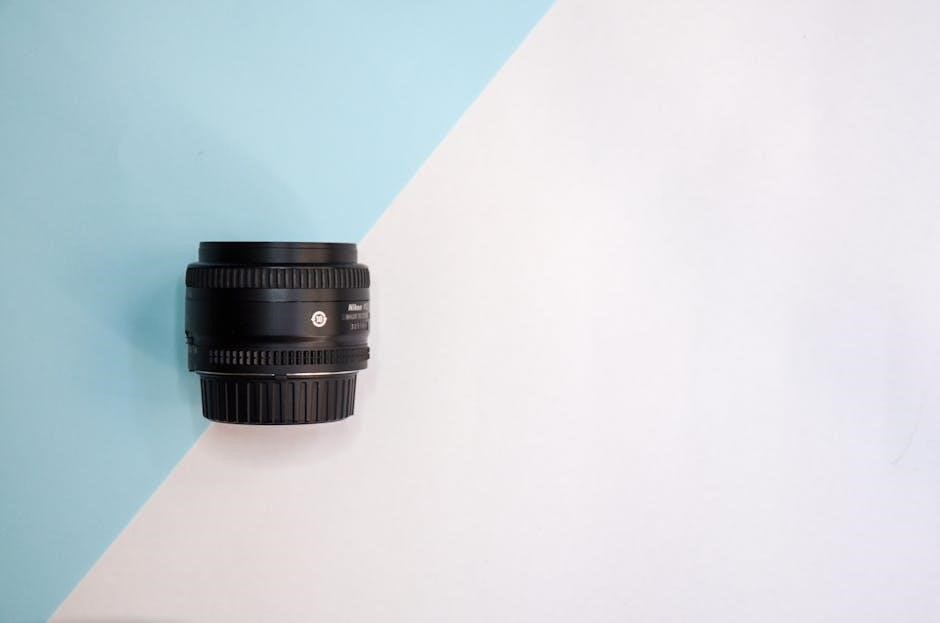Welcome to the Zoom H1 Owner’s Manual, your comprehensive guide to understanding and using your new device. This manual provides essential information on safety, features, and proper usage to ensure optimal performance. By reading this guide, you’ll learn how to maximize the potential of your Zoom H1 while adhering to important safety precautions and warranty details.
1.1 Overview of the Zoom H1 Device
The Zoom H1 is a compact, portable audio recorder designed for high-quality sound capture. Equipped with built-in microphones, it supports various recording formats and offers long battery life. Its lightweight design and intuitive interface make it ideal for field recording, interviews, and music sessions. The device features a memory card slot for storage expansion and is compatible with both PC and Mac for easy file transfer. With its robust construction and user-friendly controls, the Zoom H1 is a versatile tool for professionals and hobbyists alike, ensuring excellent audio performance in diverse environments.
1.2 Importance of Reading the Manual
Reading the Zoom H1 manual is crucial for unlocking its full potential and ensuring safe operation. It provides detailed instructions on setting up the device, understanding its features, and troubleshooting common issues. The manual also outlines safety precautions, warranty information, and maintenance tips to prolong the device’s lifespan. By following the guidelines, users can avoid potential damage and optimize their recording experience. This comprehensive guide is essential for both novice and experienced users to maximize the functionality and performance of their Zoom H1 recorder effectively.
1.3 Safety Precautions
To ensure safe and optimal use of your Zoom H1, carefully follow these precautions. Avoid exposing the device to extreme temperatures, moisture, or physical stress. Handle the battery with care, ensuring proper installation and avoiding improper disposal. Keep the device away from strong magnetic fields and electromagnetic sources. Adhere to FCC regulations, as the Zoom H1 is a Class B digital device. Always read the manual before initial setup and use, and follow all warnings to prevent damage or malfunction. Proper care ensures longevity and reliable performance of your recorder.

Unpacking and Initial Setup
Welcome to the Zoom H1 setup guide. Carefully unpack the device, ensuring all accessories are included. Insert the battery, connect via USB, and begin recording effortlessly.
2.1 What’s Included in the Box
When you unbox your Zoom H1, you’ll find the following items: the Zoom H1 recorder, a 2GB microSD card, two AA batteries, a USB cable, and a quick guide; Additionally, a soft carrying pouch is included for convenient storage and transport. The package may also contain a warranty card and safety precautions pamphlet. Ensure all items are accounted for before proceeding with setup. These accessories are essential for getting started and ensuring optimal performance. If any item is missing, contact the retailer or manufacturer immediately.
2.2 First-Time Device Setup
To set up your Zoom H1 for the first time, insert the included AA batteries or use a USB cable for power. Next, insert the provided 2GB microSD card into the memory card slot. Power on the device and navigate to the menu to set the date, time, and recording preferences. Familiarize yourself with the buttons and controls before recording. Ensure the device is fully charged or has fresh batteries for optimal performance. This initial setup will prepare your H1 for capturing high-quality audio right away.
2.3 Mounting and Handling the Device
The Zoom H1 can be mounted on a tripod or microphone stand using the 1/4-inch socket on its underside. For handheld use, ensure a firm grip to avoid accidental button presses. When handling, avoid touching the microphones to prevent noise. Use the provided case or a windshield for protection. Always store the device in a dry, cool place. Avoid exposing it to extreme temperatures or physical stress. Proper handling ensures optimal performance and extends the lifespan of your Zoom H1.

Hardware Components and Features
The Zoom H1 features built-in XY microphones, a microSD card slot, USB port, line-out/headphone jack, and volume controls. Its lightweight design includes an LCD screen and long battery life.
3.1 Built-In Microphones
The Zoom H1 features two high-quality built-in condenser microphones arranged in an XY pattern. This configuration ensures a wide stereo image and accurate sound reproduction. The microphones are capable of handling sound levels up to 120 dB, making them suitable for recording loud environments without distortion. A built-in shock mount reduces vibrations, and the self-test function allows users to check for proper operation before recording. These features make the H1 ideal for various applications, including interviews, live performances, and field recordings.
3.2 Memory Card Slot
The Zoom H1 is equipped with a memory card slot that supports microSD and microSDHC cards, ensuring ample storage for your recordings. Cards with capacities up to 32GB are compatible, allowing for extended recording sessions. Always use a high-quality card to prevent data loss or corruption. Before use, format the card in the H1 to ensure compatibility with the device’s file system. Proper card management is essential for reliable performance and to avoid recording interruptions. Regularly back up your data to prevent loss of important files.
3.3 USB Port and Connectivity
The Zoom H1 features a USB port for seamless connectivity to computers, enabling easy data transfer and device charging. The USB port supports standard USB 2.0 connections, ensuring compatibility with most modern computers. Use the provided USB cable to connect the H1 to your PC or Mac for transferring recordings or updating firmware. The port also allows the device to be powered via USB, making it convenient for long recording sessions or when batteries are low. This feature enhances the H1’s versatility for both field and studio use.
3.4 Line-Out/Headphone Jack
The Zoom H1 features a 3.5mm stereo Line-Out/Headphone jack, allowing you to monitor recordings or connect external audio equipment. This dual-purpose port enables real-time audio monitoring with headphones, ensuring accurate playback and helping you detect issues like distortion. It also supports connecting to external devices, such as mixers or speakers, for playback or further audio processing. For optimal performance, use high-quality headphones or cables. Adjusting the volume via the H1’s controls ensures clear audio without distortion. This feature is essential for both field recording and studio applications, enhancing flexibility and professional workflow.
3.5 Volume Control Buttons
The Zoom H1 is equipped with dedicated volume control buttons, allowing precise adjustment of playback and recording levels. Located on the side of the device, these buttons enable quick and intuitive volume changes. Pressing the up button increases the volume, while the down button decreases it. The buttons also function as a fast way to adjust headphone levels during monitoring. The LED indicators on the device provide visual feedback for volume levels, ensuring optimal audio monitoring. This feature enhances usability, making it easier to achieve the perfect balance for your recordings.
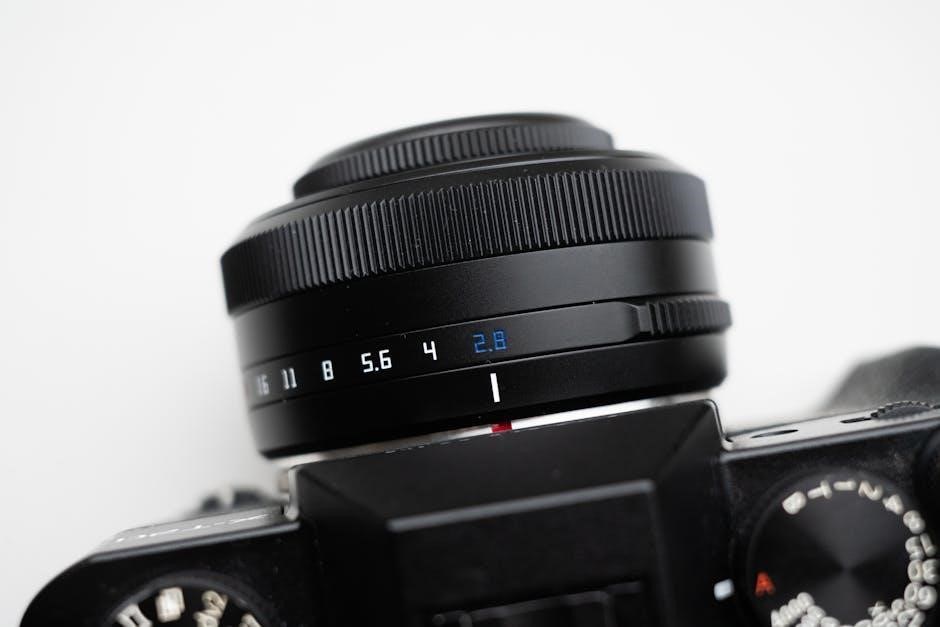
Recording Settings and Audio Formats
The Zoom H1 offers a variety of recording settings, including WAV and MP3 formats, bit depth options, and sample rates to ensure high-quality audio capture tailored to your needs.
4.1 Understanding Recording Modes
The Zoom H1 offers multiple recording modes to suit different scenarios. The default Stereo Mode captures wide stereo audio, ideal for interviews and field recording. The 360 Mode is designed for immersive audio, while ASMR Mode focuses on capturing subtle sounds with heightened sensitivity. Each mode optimizes microphone settings for specific applications, ensuring high-quality results. Users can select the mode that best fits their recording environment and purpose, whether for music, podcasts, or ambient sound capture.
4.2 Selecting Audio Formats (WAV, MP3)
The Zoom H1 offers versatile recording options with both WAV and MP3 formats. WAV captures uncompressed audio, delivering high-quality sound perfect for professional applications. MP3 compresses audio, reducing file size for easier storage and sharing, making it ideal for casual use. To select your format, navigate to the audio settings menu and choose between WAV or MP3 based on your specific needs. For optimal results, consider the intended use of your recording to decide the best format. This choice will impact both file size and audio quality.
4.3 Bit Depth and Sample Rate Options
The Zoom H1 allows you to adjust both bit depth and sample rate to optimize your recordings. Bit depth options include 16-bit or 24-bit, with 24-bit offering greater dynamic range and higher quality. Sample rates range from 44.1 kHz to 96 kHz, catering to different recording needs. Higher sample rates capture more audio detail but increase file sizes. Choose settings based on your project requirements: 44.1 kHz/16-bit for standard use or 96 kHz/24-bit for professional-grade audio. These settings can be adjusted in the device’s menu under audio quality options.

Using the LCD Screen
The Zoom H1’s LCD screen provides clear monitoring of recording levels, time, and battery life. The backlit display ensures visibility in various lighting conditions for easy operation.
5.1 Navigating the Menu System
Navigating the Zoom H1’s menu system is straightforward. Use the Menu button to access settings, and the Forward and Backward buttons to scroll through options. Highlighted items are selected using the Record button. The Play button doubles as a shortcut to exit the menu. On-screen indicators show the current selection, making it easy to adjust settings like recording format or input levels. This intuitive design ensures quick access to features, even for users unfamiliar with the device.
5.2 Understanding the LCD Display
The Zoom H1’s LCD display provides essential information at a glance. It shows the current time, battery life, recording status, and audio levels. The display also indicates the selected recording mode, file format, and memory card status. Icons represent features like low cut filter and auto level. The LCD is backlit for visibility in low-light conditions and can be adjusted in brightness. This clear interface ensures users can monitor settings and recording status efficiently, making it easier to manage sessions and ensure high-quality audio capture.
5.3 Adjusting Brightness and Contrast
The Zoom H1 allows users to customize the LCD display by adjusting brightness and contrast. Navigate to the display settings in the menu, then use the cursor keys to increase or decrease brightness and contrast levels. This ensures optimal visibility in various lighting conditions. Adjusting these settings can enhance screen clarity and reduce eye strain during long recording sessions. Factory default settings can also be restored if needed, providing flexibility for different user preferences and environments.

Advanced Recording Features
This section explores advanced recording features such as low cut filters, auto level control, and voice recorder functions, enhancing audio quality and versatility for professional use.
6.1 Using the Low Cut Filter
The Zoom H1 features a low cut filter to reduce low-frequency noise such as rumble or hum. Enable it in the menu to minimize unwanted sounds during recording. Ideal for windy conditions or noisy environments, the filter helps deliver cleaner audio. Use it cautiously, as it may affect bass-heavy sounds. Adjust settings based on your recording environment for optimal results. This feature enhances audio quality by focusing on the desired frequencies, making it essential for professional-grade recordings.
6.2 Enable/Disable Auto Level
The Zoom H1’s Auto Level feature automatically adjusts recording levels to prevent distortion and ensure optimal sound quality. Enable it for hands-free adjustments, ideal for beginners or unpredictable audio environments. Disable it for manual control over input levels, offering precise adjustments for experienced users. Access this setting in the device menu under Audio Settings. Use Auto Level for convenience or disable it for greater control over your recordings, depending on your needs and recording scenario.
6.3 Voice Recorder Functions
The Zoom H1 offers specialized voice recorder functions designed for clear and efficient audio capture. Features like voice-activated recording allow the device to start recording when sound is detected, conserving memory and eliminating silence. The pre-recording function captures up to 2 seconds of audio before you press record, ensuring no important moments are missed. These functions are ideal for lectures, interviews, and dictation, making the H1 versatile for both professional and casual use. Enable these settings in the menu to enhance your recording experience and capture audio seamlessly.
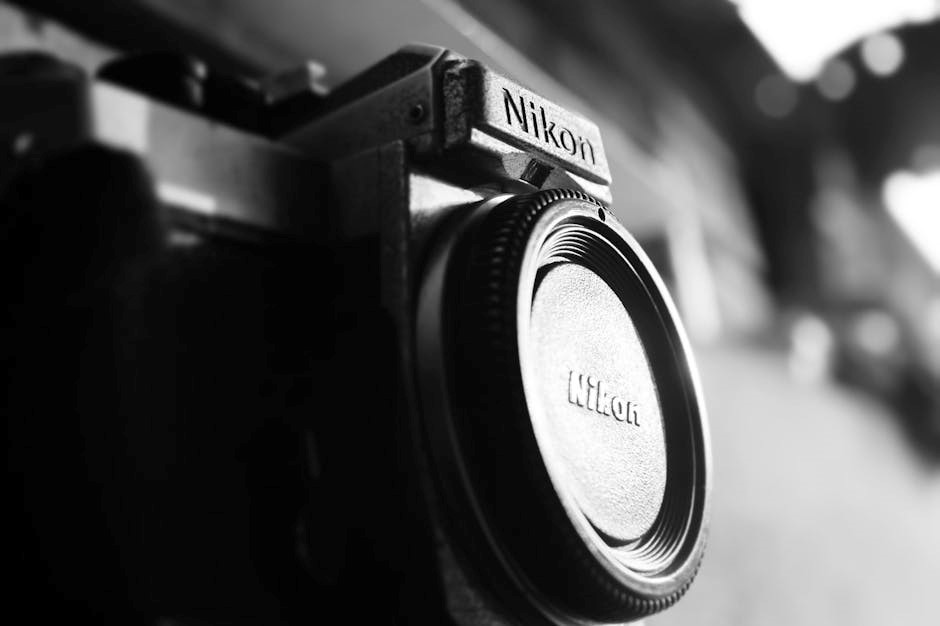
Power Management
The Zoom H1 is powered by two AA batteries, offering up to 10 hours of operation. Power-saving modes reduce battery consumption, extending recording time efficiently.
7.1 Battery Types and Life
The Zoom H1 is powered by two AA batteries, which provide up to 10 hours of continuous recording. Alkaline or nickel-metal hydride (NiMH) batteries are recommended for reliable performance. Battery life depends on usage patterns, such as recording mode and screen brightness. For extended sessions, alkaline batteries offer consistent power, while NiMH batteries are more cost-effective for frequent use. Always remove batteries when the device is not in use for prolonged periods to prevent leakage. Using rechargeable batteries is encouraged for environmental efficiency and long-term cost savings.
Regularly check battery levels using the LCD indicator to avoid interruptions during recording. Low battery warnings ensure timely replacements, maintaining uninterrupted operation. Proper battery maintenance is key to optimizing the device’s performance and longevity.
7.2 Power-Saving Modes
The Zoom H1 features power-saving modes to extend battery life. The Auto Power Save function turns the device off after 15 minutes of inactivity, while the LCD screen dims after one minute of no operation to reduce power consumption. These modes help conserve energy without compromising recording quality. Users can enable or disable these settings via the menu to balance efficiency and convenience. Adjusting these settings ensures optimal battery performance for extended recording sessions.
Enabling power-saving modes is ideal for long recordings or when battery life is a concern.
7.4 Charging the Battery
To charge the Zoom H1’s battery, connect it to a computer via USB or use a USB wall charger. The device uses a rechargeable lithium-ion battery, which takes approximately 2-3 hours to fully charge. The LED indicator will glow red during charging and turn off when complete. Ensure the device is turned off while charging for optimal performance. Always use a Zoom-approved USB cable to avoid damage. Proper charging ensures reliable operation during recordings.
Keep the battery charged regularly to maintain its lifespan and performance.
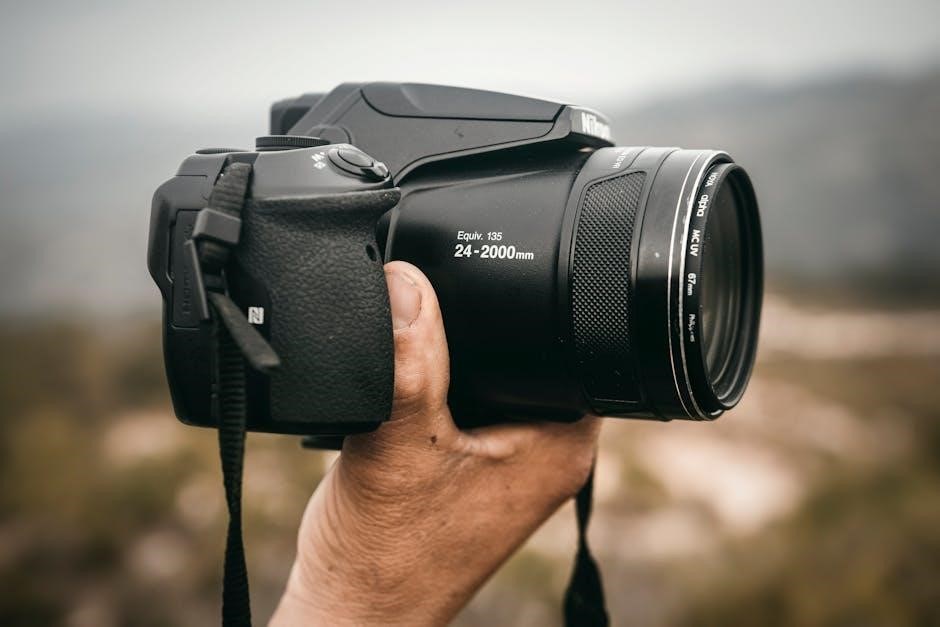
File Management
Efficiently organize and manage your recordings by renaming, deleting, or transferring files to your computer via USB. Use the device’s menu to sort and backup files securely.
8.1 Organizing Recorded Files
Organize your recordings by creating folders and naming them based on date, project, or type. Use the LCD screen to navigate and sort files easily. The Zoom H1 allows you to manage files directly on the device or transfer them to a computer. Files are automatically named with dates and times, making identification straightforward. You can also rename files to suit your needs. This feature helps keep your recordings tidy and easily accessible, ensuring efficient file management and reducing clutter.
8.2 Renaming and Deleting Files
Rename files on the Zoom H1 by navigating to the file in the menu, selecting “Rename,” and entering a new name using the on-screen keyboard. Deleting files is straightforward: highlight the file, select “Delete,” and confirm. You can also delete multiple files at once by checking boxes next to each file. Regularly managing your files helps maintain storage space and keeps your recordings organized. Always back up important files before deleting to avoid data loss. Use these features to streamline your workflow and optimize device performance.
8.3 Transferring Files to a Computer
To transfer files from the Zoom H1 to a computer, connect the device using a USB cable. The H1 will appear as a removable drive. Open the device folder, locate your recordings, and drag-and-drop them to your computer. You can also use the built-in USB utility to transfer files. Select the files, copy (Ctrl+C), and paste (Ctrl+V) them to your desired folder. For better organization, create separate folders for different projects. Always eject the device properly after transferring to prevent data loss; This ensures safe and efficient file management.
Troubleshooting Common Issues
Troubleshooting common issues with the Zoom H1. No sound: Check microphone settings and connections. Device not recognized: Restart and reconnect. Battery issues: Charge fully and update firmware. Refer to the manual for detailed solutions.
9.1 No Sound or Distorted Audio
If your Zoom H1 isn’t recording sound or the audio is distorted, check the input settings. Ensure the built-in microphones are selected and the gain is adjusted properly. Verify that the Low Cut filter is disabled or set appropriately. Inspect the microphone grilles for blockages and ensure all cables are securely connected. If using external mics, test with the built-in mics to isolate the issue. Restart the device or reset to factory settings if necessary. Consult the manual for detailed troubleshooting steps.
9.2 Device Not Recognized by Computer
If your Zoom H1 isn’t recognized by your computer, start by checking the USB connection. Ensure the cable is securely plugged into both the device and the computer. Try using a different USB port or cable to rule out hardware issues. Restart both devices to establish a fresh connection. If the problem persists, check your computer’s Device Manager to see if the H1 is listed. Install or update the appropriate drivers from Zoom’s official website. If the device still isn’t recognized, reset the H1 to its factory settings and try again.
9.3 Battery Not Charging
If the Zoom H1’s battery isn’t charging, first ensure the USB cable is securely connected to both the device and the power source. Verify that the USB port is clean and free from debris. Try using a different USB cable or power source to rule out issues with the current one. If the battery is completely drained, allow it to charge for at least 30 minutes before turning it on. Reset the device by holding the power button for 10 seconds. If the problem persists, update the firmware or contact Zoom support for assistance.
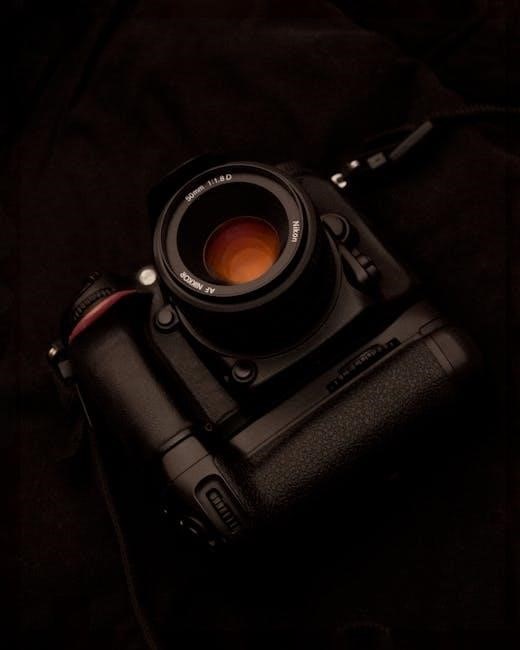
Maintenance and Care
Regularly clean the Zoom H1 with a soft cloth and avoid exposing it to moisture. Store it in a protective case when not in use.
10.1 Cleaning the Device
To maintain the Zoom H1’s performance, clean it regularly with a soft, dry cloth. Gently wipe the microphones, LCD screen, and exterior surfaces to remove dust or debris. Avoid using liquids, harsh chemicals, or abrasive materials, as they may damage the device. For stubborn marks, slightly dampen the cloth with water, but ensure no moisture enters the device. Never touch the microphone grilles or internal components with bare hands. Cleaning after each use prevents dirt buildup and ensures optimal audio quality. Store the device in a protective case when not in use to minimize wear and tear.
10.2 Updating Firmware
To ensure optimal performance, regularly update the Zoom H1’s firmware. Connect the device to a computer using a USB cable and download the latest firmware from Zoom’s official website. Use the Zoom Firmware Update Tool to install the update. Follow on-screen instructions carefully and avoid interrupting the process. Updating firmware adds new features, improves functionality, and fixes potential bugs. Always verify the firmware version matches your device to maintain compatibility. Regular updates ensure your Zoom H1 operates at its best, providing enhanced recording capabilities and reliability.
10.3 Storage and Handling Tips
Store the Zoom H1 in a protective case or pouch to prevent scratches and damage. Keep it in a cool, dry place, avoiding extreme temperatures and humidity. Handle the device with care, especially the microphones, to maintain audio quality. Clean the device with a soft, dry cloth and avoid exposure to harsh chemicals. When not in use, disconnect all cables and store them separately to prevent tangling. Proper storage and handling extend the life of your Zoom H1, ensuring optimal performance and reliability over time.

Warranty and Support Information
The Zoom H1 is backed by a limited warranty covering manufacturing defects for one year. Contact Zoom’s customer support team via their official website for assistance or inquiries.
11.1 Understanding the Warranty
The Zoom H1 is covered by a one-year limited warranty, effective from the date of purchase. This warranty covers manufacturing defects in materials and workmanship. To claim warranty service, you must provide proof of purchase. The warranty does not cover damages caused by misuse, normal wear, or unauthorized modifications. For warranty claims, contact Zoom’s authorized distributors or customer support directly. Terms and conditions may vary depending on your region or country of purchase. Always refer to the official Zoom website for detailed warranty information and regional specifics.
11.2 Contacting Customer Support
For assistance with your Zoom H1, visit the official Zoom website to find contact options. You can reach customer support via phone, email, or live chat. Be prepared to provide your product serial number and a detailed description of your issue. Regional support offices are available to address location-specific inquiries. For the most accurate and updated information, always refer to the official Zoom support page. This ensures you receive timely and effective help for any questions or concerns about your device.
11.3 Online Resources and Manuals
Visit the official Zoom website for the H1 owner’s manual and support resources. The support section includes FAQs, troubleshooting guides, and video tutorials. Download the manual directly for detailed instructions. Explore community forums for user tips and discussions. Register your H1 for firmware updates and exclusive content. Regularly check the site for the latest manual version to stay informed.
Mastering the Zoom H1 enhances your recording experience. Explore its features, practice regularly, and stay updated with firmware. Happy recording!
12.1 Maximizing Your Zoom H1 Experience
To fully utilize your Zoom H1, explore its features like dual microphones and low-cut filters for high-quality recordings. Regularly update firmware for optimal performance. Experiment with settings to customize your recording experience. Organize files efficiently and use accessories like windshields for better results. Practice makes perfect—test different techniques to enhance your audio. By understanding and applying these tips, you’ll unlock the H1’s full potential and achieve professional-grade recordings every time. Happy creating!
12.2 Additional Resources for Users
For further assistance, visit the official Zoom website for detailed guides, FAQs, and video tutorials. The Zoom H1 user community forums offer valuable insights and tips from experienced users. Additionally, the Zoom Audio Podcast provides expert advice and inspiration for recording enthusiasts. Don’t forget to explore the downloadable PDF manual for in-depth technical details. These resources will help you master the H1 and enhance your recording skills. Utilize these tools to get the most out of your device and stay updated with the latest features.
